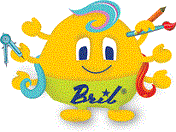Search the Community
Showing results for tags 'art'.
-
OMAS as you already know is a 90 year old Italian manufacturer of fine writing instruments and related luxury goods. Founded in 1925, it does carry the name of its founder, Armando Simoni. OMAS as it is, stands for Officina Meccanica Armando Simoni, which means workshop for machinery And initially f...
- 31 replies
-
Hi folks I am super new to this hobby. Since I recently completed my first project I would like to post it here and get your eyes on it. Like many of you, I too found the Japanese maki-e fountain pens amazingly beautiful yet very out of my reach price-wise. I had some experience assembling car mode...
-
... for Amberlea: If it were to pick from these three, which one would you chose for your daily writer?
-
Not sure if this is the right forum or if there even is a rightful place for it on FPN. I'm experimenting with a concertina prototype for my students. (The fold-and-cut concertina template isn't mine.) This first attempt is just on printer paper, as I wasn't sure if I would be messing up...
- 27 replies
-
- art
- experiment
-
(and 1 more)
Tagged with:
-
I'm trying to teach myself scrollwork. For only a few days practice, it looks pretty cool already... at least when I sit back and squint at it - so continuing learning feels easy right now I'm definitely open to constructive criticism. My shading in this one is super i...
- 13 replies
-
Ranga Model 8B Group Buy- Infinite Beautiful Colour And Nib Choices
mpkandan posted a topic in Pay It Forward, Loaner Programs & Group Buys
Dear fellow FP users Over the years We have successfully organized many group buys. The main motive is to facilitate all members to get Our pens at a lower price. We have recently launched a Model 8B which has created great interest among our Customer's . So we decided to do Group buy for this Mo... -

A Flex Pen For Drawing, And An Ink To Go With?
TaylorJ posted a topic in Fountain & Dip Pens - First Stop
Hi all, I'm still very new to fountain pens and am looking to possibly add something specific to my collection. I have a couple Jinhaos, a couple TWSBI Ecos, an Al-Star, etc., and I love them dearly. However, I'm looking to upgrade a little bit (possibly a lot bit!) in terms of a flex pen for dr... -
Artist using fountain pens UEF and spray fixative drawings
Carolartist posted a topic in Of Nibs & Tines
Hello, I am an artist who has recently moved away from India ink and rapidograph/technical pens (4x0) to UEF platinum 3776 fountain pens and dye based fountain pen ink. My style is drawing/inking on top of watercolors. As such fountain pen ink tends to spread and I lose my th... -

Reviews Of Books About Pen Writing And Pen Related Topics?
linearM posted a topic in Fountain & Dip Pens - First Stop
I hope this is the appropriate forum for this posting. There do not seem to be reviews of books not directly related to pen and pen history but about other pen related topics. So I thought I’d start one and see if anyone else has books that they would recommend. If anyone has books related to corr...- 11 replies
-
Today, You Know which video platform gave me the following suggestion: Hope you enjoy it as much as I did. Tadeo
-

Bakelite Fountain Pen With Japanese Cloisonne Shippoyaki Art
TaizoOkagaki posted a topic in Japan - Asia
I just recovered from influenza but I am so excited to tell you a story that I also just told my friends on Facebook. Around 15 years ago, Japanese Shippo artist 岡垣幸得 (Okagaki Yukie) presented me 2 big frames (1 of them is in second picture).They are handmade with Japanese Cloisonne or 七宝焼 /shippoya...- 14 replies
-
- fountain pen
- bakelite
- (and 6 more)
-
After somebody saw my Stairway to Heaven drawing, I was asked how to draw such a stairway and I though I would explain it step by step in this post. A stairway can be very effectively used as a main element leading viewers eyes towards focal points in a drawing and adds great visual appeal to a draw...
- 1 reply
-
- art
- pen and ink drawing
-
(and 1 more)
Tagged with:
-
Old exposed roots of a tree convey age, strength, adaptation and commands our respect. Though they look quite complicated to draw, once simple steps and techniques as shown below are understood, they can be drawn in limitless ways. Follow along the steps below and see how fun it is to draw such old...
- 2 replies
-
- pen drawing
- art
-
(and 1 more)
Tagged with:
-
With its varied texture and limitless possibilities, tree bark is always fun to draw with pen and ink. Though it looks intimidating in the beginning, with simple strokes and techniques, pen is ideal medium to draw bark. Grab a good gel pen and follow along to do this pleasing pen and ink drawing....
-
Bark texture is ideally suited for drawing with pen and ink and one of really fun drawings in this regards is drawing an old tree stump with deep crevices and grooved bark. Here I will show how with simple stroke and technique you can draw one. There are limitless variations on this and one can be d...
-

Step By Step: Drawing Snow Covered Pine Trees With Pen And Ink
rahul_jain posted a topic in The Write Stuff
Drawing snow covered pine trees is very easy and fun to do. With simple technique as illustrated below, anybody can attempt them and draw pleasing winter landscapes based on them with pen and ink. So grab a pen and paper and follow along. Step 1: Draw the OutlineDraw a typical Christmas tree shap... -
Dear fellow FP users We have launched Ranga Model 4S & 4CS Group Buy in lots of beautiful ebonite colours. It is Slender version of our famous Models Model 4 & 4C . The specialty of this Group Buy is 1. Lot of colours as usual. It is the first group buy from us for Slender versions. 2. Price rang...
-
I write weekly posts such as the following to inspire anybody to learn to do simple drawing with pen and ink. ------------------------------------------------------------------------------ Drawing a Waterfall: Drawing a waterfall may sound intimating, but as we will below, it is quite easy to do w...
- 8 replies
-
- drawing
- landscapes
-
(and 4 more)
Tagged with:
-
Fountain pen lovers, Bril, India's leading fountain pen ink brand will ship internationally in 2019 and we have just started a Global Handwriting Movement to make children write properly again. Our crowdfunding campaign has awesome perks whether you are an adult who loves world-class, pocket-friendl...
- 1 reply
-
- handwriting
- fountain pens
-
(and 6 more)
Tagged with:
-
Quick and Easy Pen & Ink Landscapes: "What can I draw from my imagination in the limited time I get from my busy schedule without any prior drawing experience" This is a question I often get asked and one that newcomers to art are often confronted with. In this post, I will describe a pleasing lands...
-
- 5 replies
-
- birmingham
- ink
- (and 7 more)
-
An interesting blog on using fountain pens and ink from an artists perspective http://www.lizsteel.com/fountain-pen-sketching-part-4-choosing-a-fountain-pen/
-
Hi, I am pleased to announce completely free workbooks for learning to draw simple landscapes in pen and ink. If you have ever wanted to learn how using simple pen strokes you can bring a landscape to life, then try them out. I have 2 initial volumes as following and would love to get any feedback o...
- 10 replies
-
- drawing
- landscapes
-
(and 2 more)
Tagged with:
-
There are plenty of reviews about the Desiderata out there, but most of them are from the POV of a copperplate calligrapher, which is this pen's intended use. There are few reviews that focus on drawing, which is a shame, because I think this is a nice, and also an overlooked art tool. In case you h...
- 10 replies
-
- desiderata
- art
-
(and 3 more)
Tagged with:
-
Ah, well I was just curious if anybody else has done this with their pens before, but have you guys ever modded or tweaked your pen with other pens? I have a Pilot Penmenship nib <ef> and 'guts' I guess you could say, but I found out you could use the Jinhao x750's body with it. I mostly did it beca...
























